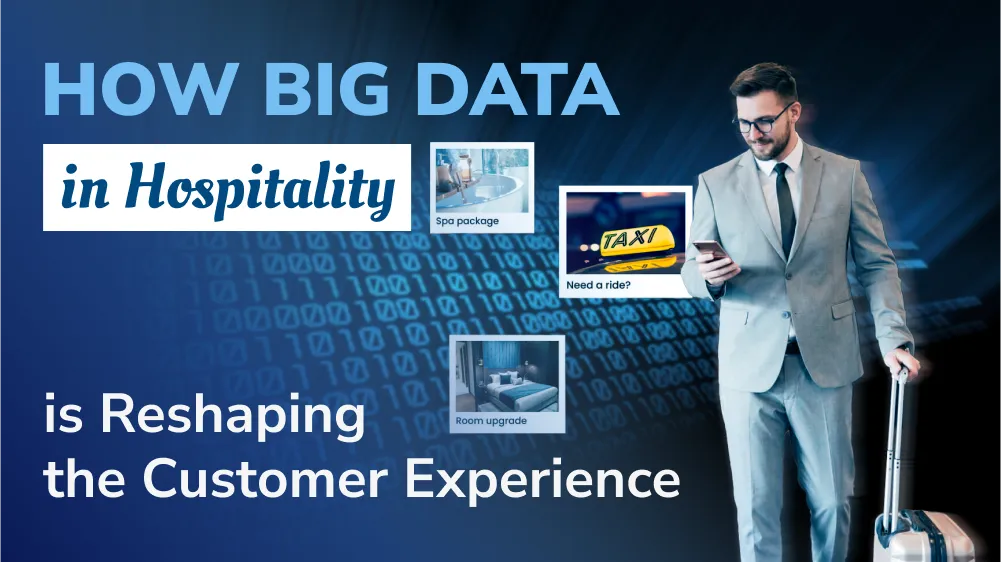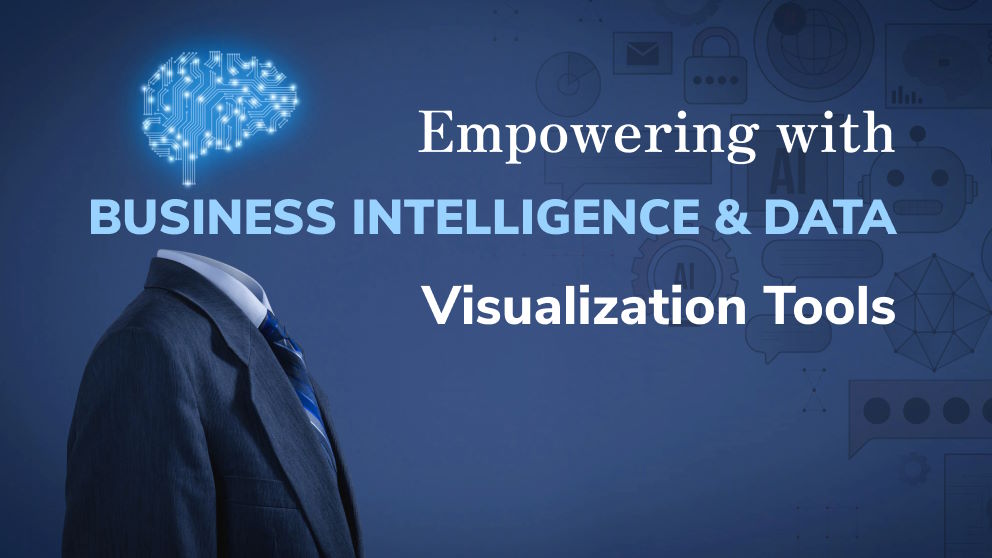Understanding the Essentials of Big Data Databases

Content Map
More chaptersThe amount of data being generated every second is growing at incredible speeds. According to Statista, global data creation is estimated to develop to more than 180 zettabytes by 2025. This wealth of information, though, can bring businesses valuable insights through extracting and analyzing, it poses countless potential risks in terms of data storage and security.
Traditional databases were once safe and effective places to store data, but they are now considered outdated methods to handle the sheer volume of data efficiently as digital transformation is growing at breakneck speed.
If you are also struggling in this same situation, fear not. Big data databases have come into play as the optimal solution for data storage and management in today’s data-driven landscape. With the ability to rapidly ingest and process petabytes (where one petabyte equals 1,024 terabytes) of data, big data databases hold the future of efficiency and transformation across sectors by unlocking the potential of data as a strategic asset.
Key Takeaways:
- Big data databases are non-relational databases designed to handle massive volumes of structured and unstructured data.
- Non-relational databases that deal with big data are often referred to as NoSQL databases.
- Traditional databases differ from big data databases in terms of flexibility, scalability, and the ability to process diverse data types at high speeds.
- Data integration complexities, data governance management, and data quality issues are some common challenges in implementing big data databases.
What Is Big Data?

Big data is the kind of data that is rapidly generated in increasingly large volumes and in a wide variety of data types. It is generated at a much faster pace, and it comes from many more sources than traditional data sets, which typically come from limited sources and in limited data types.
The three defining Vs of big data warehouses are:
- Volume – Individuals, companies, and organizations produce much higher volumes of data than ever before. This is because there are many more ways to produce data from multiple sources. Some examples of this include data from social media feeds, online transactions in e-commerce stores, and IoT (the Internet of Things) devices that collect and store data about equipment.
- Velocity – This refers to the rate at which data is generated, received, and acted upon by key decision-makers. These days, big data databases are powerful enough to process large amounts of big data at super-fast lightning speeds. In doing so, this allows for real-time (or near real-time) evaluation and action, allowing for faster, more informed decision-making.
- Variety – The variety of big data is much larger than traditional data sets. This is because big data comes in all kinds of data types. These include text, audio, video, images, geospatial data, and 3D-generated content. Different types of sources produce different types of big data. For instance, semi-structured data typically comes from mobile applications, emails, and IoT devices, as it still conforms to a structure without being restricted to fixed tables and columns.
Each type of big data requires a different set of tools and databases in order to be processed, analyzed, and acted upon. And if the evolution of big data has told us anything, the number of solutions will only grow bigger.
What Are Big Data Databases?

Big data databases are non-relational databases. They store data in a format other than relational tables. They are designed specifically to collect and process different big data types, including structured data, semi-structured data, and unstructured data. Unlike the data lake, which is a storage layer for data of any type, the big data database can bring structure to that data and make it queryable, being optimized for analytics.
Big data databases have a flexible schema. This means the fields don’t need to be the same, and each field can have different data types. They can also be horizontally scaled, as the workload can be distributed across multiple nodes. This is only possible with non-relational databases, as they’re self-contained and not connected relationally.
By not being confined to fixed tables and columns, they can more efficiently process the kind of complex data sets that traditional structured query language (SQL) databases cannot process.
The four most common distributed database solutions are:
- Document databases store data in documents. In a non-relational database, a document is a record that stores information about an object and any related metadata. These documents store data in field-value pairs. The value of these pairs can be all kinds of types and structures, such as objects, strings, numbers, dates, and arrays.
- Key-value databases store data in a key-value format. To retrieve the value of a piece of data, one must type in the unique key or number associated with that value. Values can be basic objects like strings and numbers, or they can be more complicated objects.
- Wide-column stores store data in dynamic columns, which can be distributed across multiple nodes and servers. This means that, unlike a relational database, the names and formats of each column can vary with each row. And since data is stored in columns, finding a specific value in a column is very fast.
- Graph databases reserve data in nodes and edges. While nodes store identifiable information about an object, such as the name of a person or place, edges store information about the relationship between nodes.
What Are the Advantages of Big Data Databases?
There are many advantages to using big data databases for data science services. Big data tools can process complex data sets that relational databases cannot. They can also handle large volumes of different data formats across multiple sources. And thanks to their scale-out architecture, they can take full advantage of cloud and edge computing.
- Can store and process complex data sets – Big data technologies can manage a combination of structured, semi-structured, and unstructured data. This makes it easier for businesses and organizations to make sense of the data that they collect, as the data closely resembles how it appeared in the application that generated it.
- Easy to scale – Big data databases are better equipped to handle large volumes of disparate data than relational databases. This is because the storage and processing of data can be spread across multiple computers. The more data that is added, the more computers are added to handle the increasing demand.
- Cloud and edge computing – Big data databases were created with cloud and edge computing in mind. This allows businesses and organizations using big data databases to transfer some or all of their data processing to the cloud and the edge. In doing so, businesses and organizations can build, test, and deploy applications on a hybrid or multi-cloud model.
What Are the Disadvantages of Big Data Databases?

Despite the clear advantages of NoSQL databases, there are many big data challenges. The lack of standardization among big data databases can make them hard to set up and manage. Many big data databases also suffer from a lack of ACID (Atomicity, Consistency, Isolation, and Durability) support, which makes it harder to ensure that database transactions are processed correctly.
- Lack of standardization – Most NoSQL databases use either their own schemas or no schema at all. So, for businesses, organizations, and developers, understanding the strengths and weaknesses of each NoSQL database can be time-consuming, resulting in a lot of effort spent on pre-selection and integrating it into your existing workflow.
- Inconsistent ACID transactions support – ACID is a system of properties used by SQL databases to ensure proper online transaction processing. One such property is Atomicity. This ensures that in a multi-step process, such as transferring money from one bank account to another, the process is stopped if a problem occurs in any step. With the absence of properties like this, extra measures must be taken to ensure that the data produced by a NoSQL database is trustworthy.
Best Big Data Databases to Use
Many people confuse the Hadoop Distributed File System (HDFS) as a traditional database due to some similarities. However, HDFS is instead a distributed file system used in conjunction with various big data databases. If you are looking for real big-data databases to efficiently store and manage your data, take a look at these best big-data databases.
MongoDB
MongoDB is a popular NoSQL database that falls under the document-oriented database category. It is written in C++ and has a completely different data management method than traditional relational databases. Instead of storing data in tables and rows as usual, MongoDB is much more flexible when keeping data files in JSON-like documents, making it a preferable choice for businesses working with diverse data types and structures.
Apache Cassandra
Apache Cassandra is a distributed NoSQL database designed to handle large volumes of data across various commodity servers without compromising performance. Initially developed by Facebook, it utilizes a decentralized architecture that enables each node to act as a coordinator, providing linear scalability and fault tolerance and eliminating single points of failure. Cassandra is especially popular for applications that require high speed in real-time, such as IoT, messaging platforms, and real-time analytics.
Apache HBase
Apache HBase is a familiar choice for big data applications that demand high performance and reliability. HBase stores data in a column-oriented format that simplifies adding more nodes to the cluster when workload demands increase. As a NoSQL database that runs on top of the Hadoop Distributed File System (HDFS), Apache HBase has the ability to seamlessly integrate with other tools in the same ecosystem, such as Apache Spark and Apache Hive, to optimize data processing and analytics results.
Amazon Redshift
Amazon Redshift is a fully managed cloud-based data warehousing system that uses columnar storage technology. It is provided by Amazon Web Services (AWS) for the need to handle and process large-scale data and has the ability to integrate with other AWS services like S3, DynamoDB, and Lambda. With high scalability, Redshift can easily scale from single-node to multi-node clusters and quickly adapt to increasing workloads without downtime, making it ideal for companies that require complex data analysis and reporting.
How to Choose the Right Big Data Database
There are many considerations to take when choosing a big data database such as the size, type, and variety of the data you wish to collect. Other important considerations include security, compatibility with your existing systems, and the specific goals of your business or organization.
Here are a few useful tips to help you choose the right big data database.
Understand Your Data Model
What kind of data do you want to collect, and what do you want to do with it? If your plan is to collect data from multiple processes and microservices in an application, then use a key-value database, as they are great for storing data that does not have complex relationships or joints. However, if you want to reveal complex and hidden relationships between different data sets, then a graph database will help you identify those relationships and make smart business decisions.
Consider the Scalability and Performance of the Database
Don’t let the current performance of the chosen database fool you, as there are many more factors that determine the right database choice. If the selected database only meets your current data needs without the ability to scale up and down, that is a clear signal that you have chosen the wrong one.
User data and other information related to your app and business will continue to grow over time. That’s why the scalability and performance of a big data database is so important.
While scalability is the ability for a database to easily scale vertically (by upgrading existing hardware) or horizontally (by adding more servers) to meet the growing amount of data without sacrificing performance, the performance represents the speed of ingesting, storing, retrieving, and analyze data of a database. By choosing a big data database with a high level of scalability and performance, businesses ensure data flow is always in a stable state, limiting potential risks of disruption related to additional expanding or changing needs in the future.
Evaluate Your Data Storage Needs
A global e-commerce company could leverage a distributed database to manage and process vast volumes of customer transaction data in real time, while a research institution may utilize a NoSQL database to store unstructured medical data.
Depending on the nature of operations, usage patterns, and data types, businesses across various industries will have different data storage needs, leading to diverse choices of big data databases like the example above.
In addition to understanding your data model, you must clearly determine your data storage purpose to choose which big data database is most suitable. This step requires you to pay attention to several specific aspects of your existing data, including volume of data, type of data, data access frequency, and data update frequency.
- Volume of data: the expected volume of data that your chosen database needs to store.
- Type of data: structured, semi-structured, unstructured data, geospatial data, or any other specialized formats.
- Data access frequency: how often the data will be accessed from the database.
- Data update frequency: how frequently the data will be modified or updated within the database.
Evaluate the Compatibility Level with Your Analytics Tools
It will not be a big deal if you have never used any big data analytics tools before. Otherwise, you must evaluate and measure the compatibility between your team’s existing tools for data processing, visualization, and advanced analytics and the future database to optimize resource usage and ensure seamless data analysis.
This step should be implemented right after you add any database to your favorites list. It is worth noting that the compatibility level with analytics software extends beyond basic connections. In addition to easily connecting to each other, you need to ensure that the chosen big data database is capable of supporting and meeting the advanced functionalities required by your analytics workflows.
Look for a Reliable Database Provider
Aside from choosing the right big data database solution, make sure the people you choose to develop and manage your database solution are right for the job. They should have relevant knowledge and experience in working with your desired big data database. Therefore, a deep understanding of building, testing, and maintaining data architecture is essential.
They should also be familiar with programming languages and how to analyze big data. With a strong technical background, database providers help your database always operate in the best condition without issues related to security and workflow.
Besides a proven track record, don’t forget to evaluate the communication skills of the providers. By choosing a provider with strong communication skills and technical background, you will have an easier time expressing your needs, monitoring their progress, and understanding the insights they bring to you. The provider should be easy to understand in all the different forms of written and verbal communication, including text, email, video chat, and (if relevant) in-person meetings. Furthermore, they should be able to explain to you, in plain terms, the technology powering your big data database and the insights it is producing for you.
Partnering with Orient Software for Efficient Data Management
Businesses need the help of data to drive sustainable growth. Big data databases are being used by businesses and organizations, big and small, around the world to better understand their products and services, their customers, and their processes. In doing so, they’re able to uncover insights previously inaccessible to them, enabling them to make faster, more informed business decisions.
If these are the kind of results you want for your business or organization, then partner with a trusted big data database solutions provider. They can help you define the goals of your business or organization, propose the right big data database for you, and then get to work building, deploying, and managing the solution for you.
If you are looking for custom software outsourcing services for your big data database needs, contact us at Orient Software. We specialize in big data and can help you customize the right solution for your business or organization. With our dedicated team of experts behind us, we can design, build, deploy, and manage a custom-built big data database solution that meets your needs. Moreover, we have consultants with expertise in big data technologies, machine learning, artificial intelligence, and heaps more advanced technologies that can help you get the most out of your database solution. Get in touch with us today to learn more about how we can make big data work for you.







